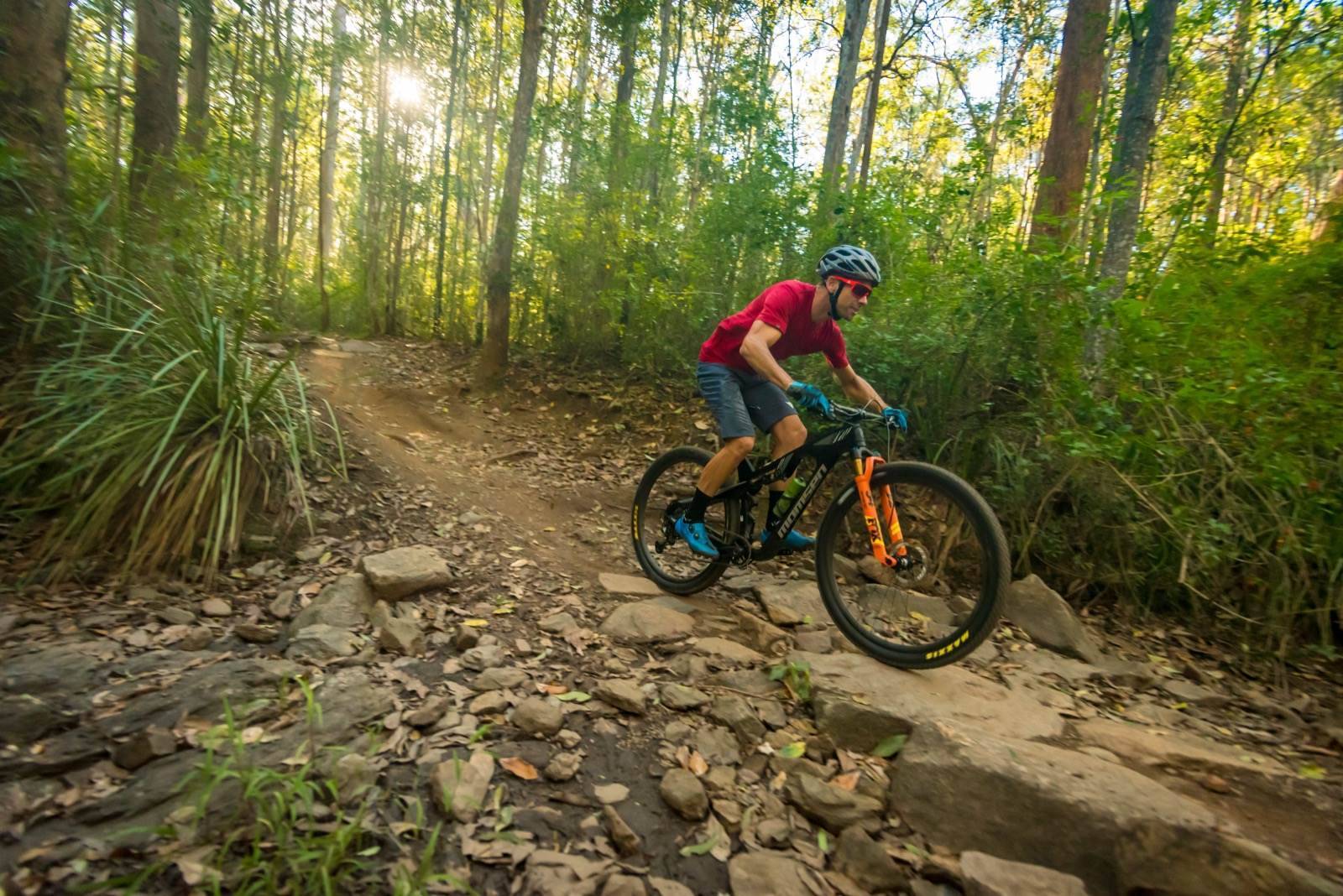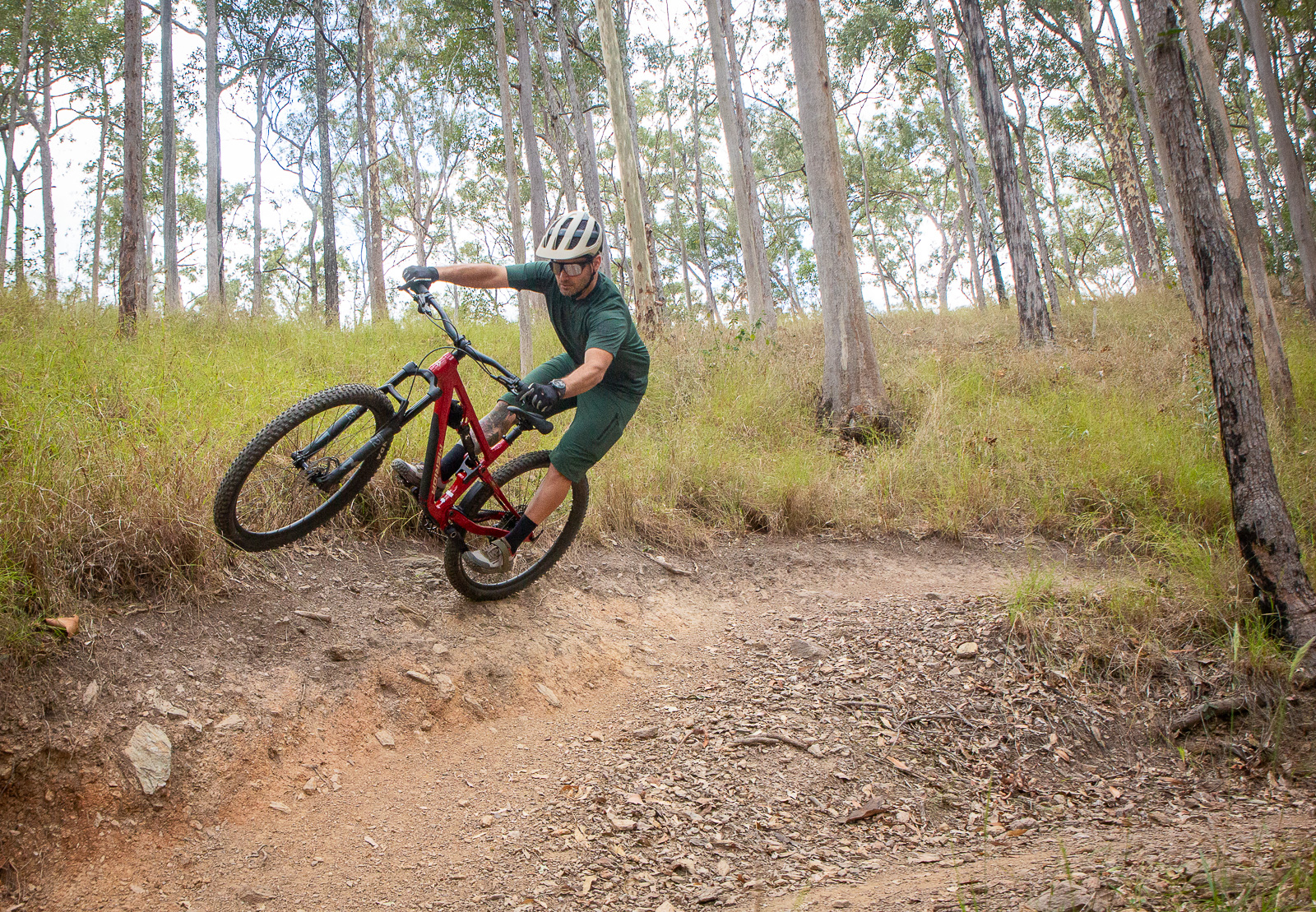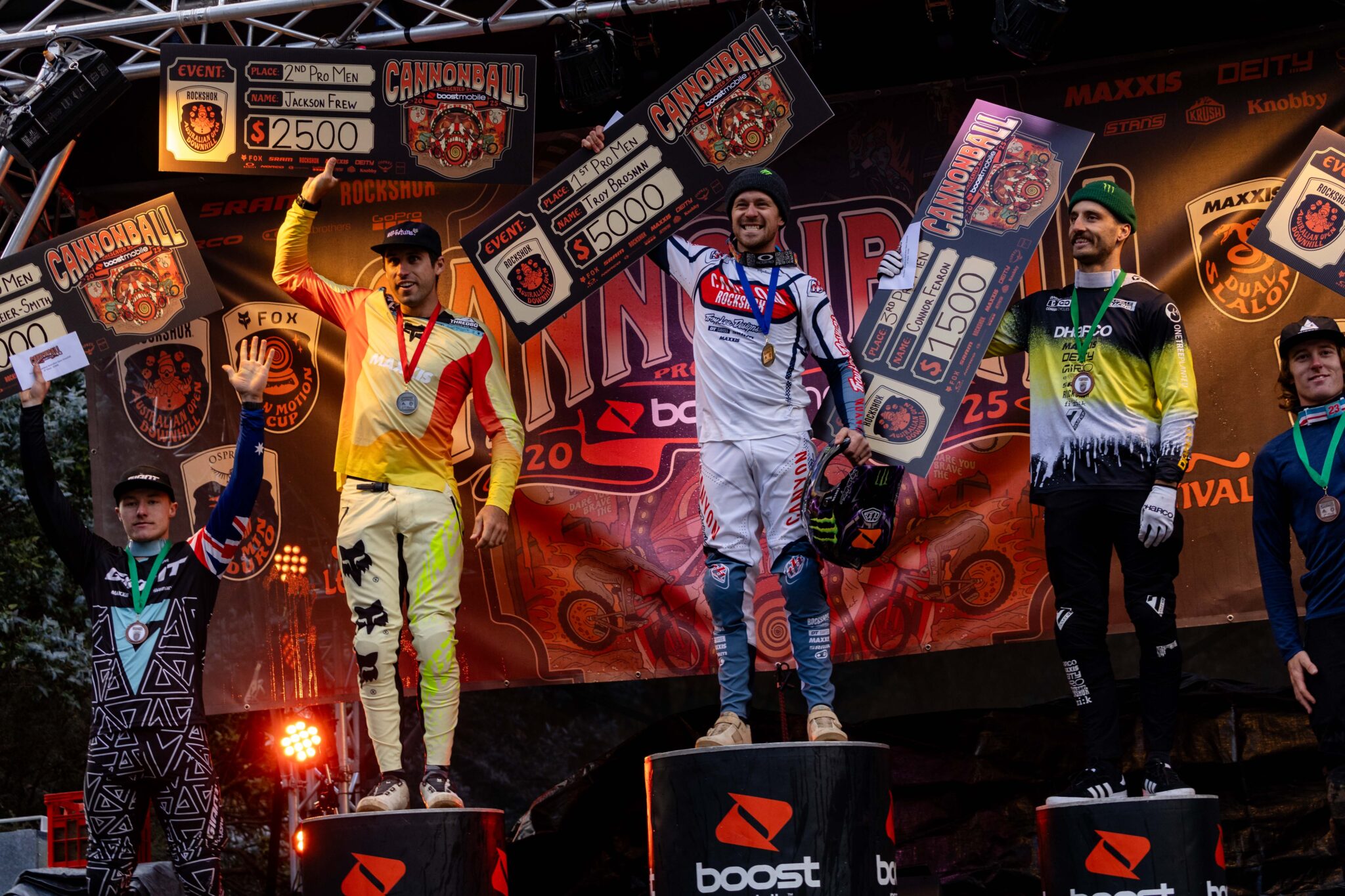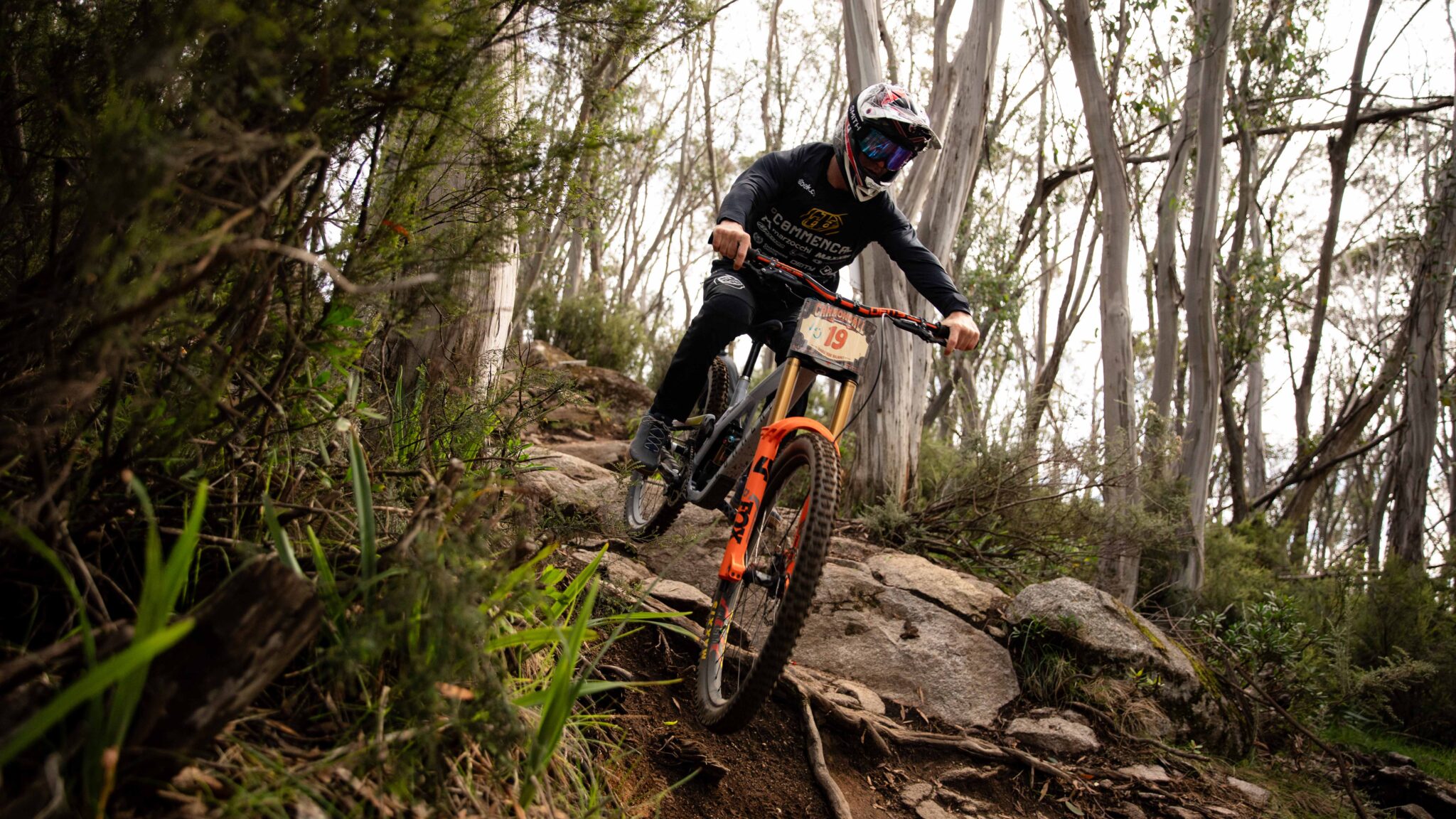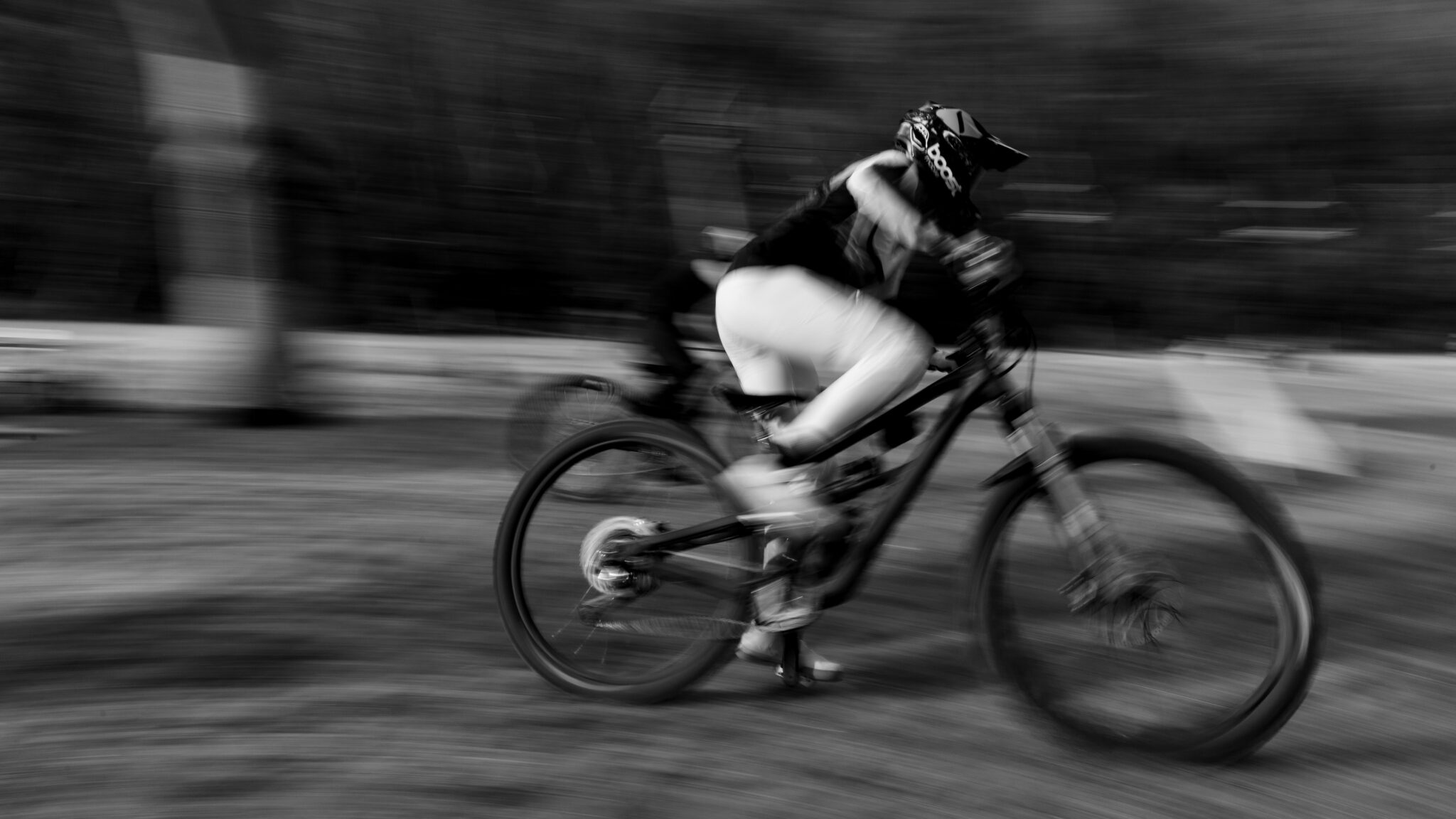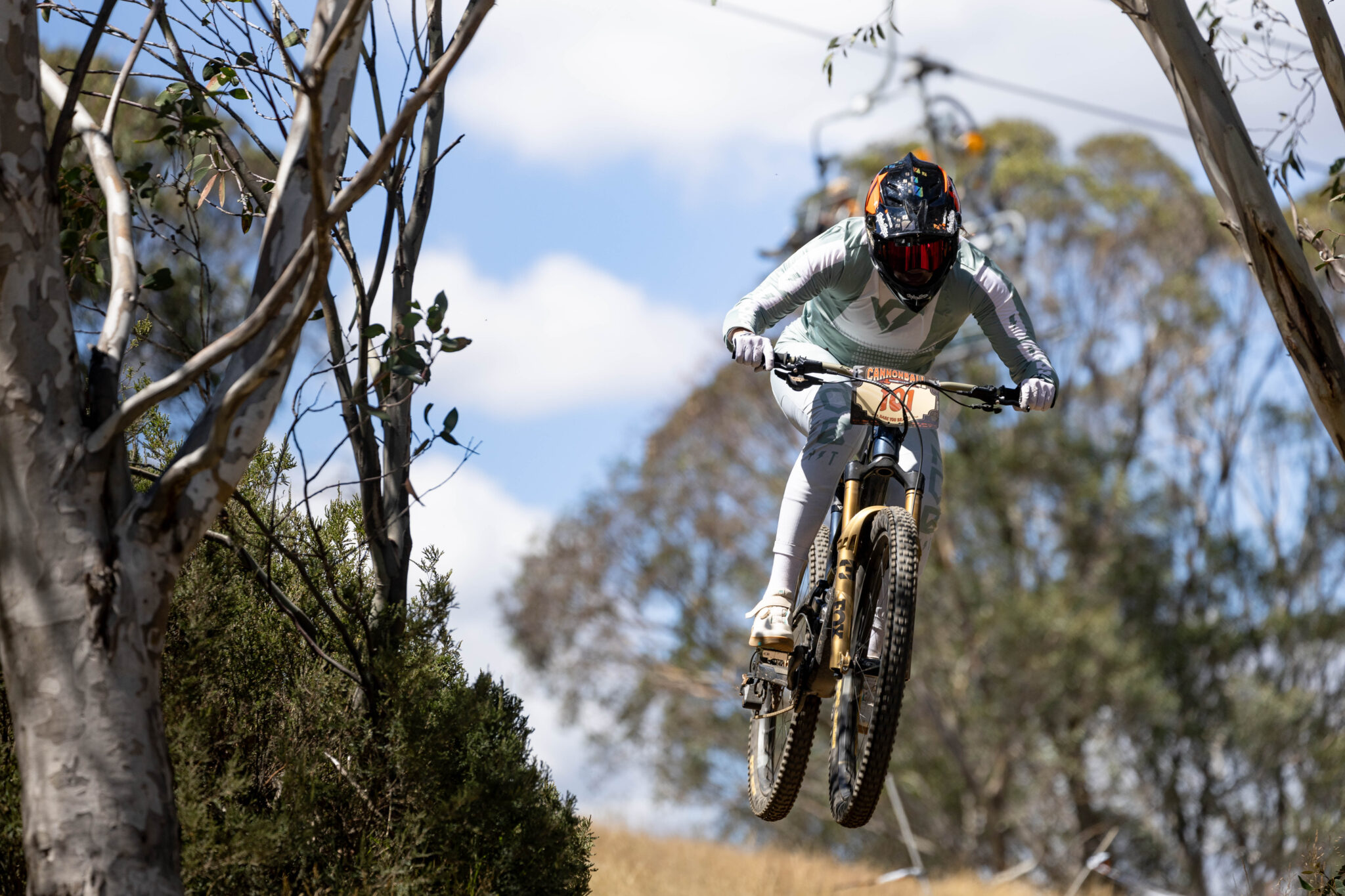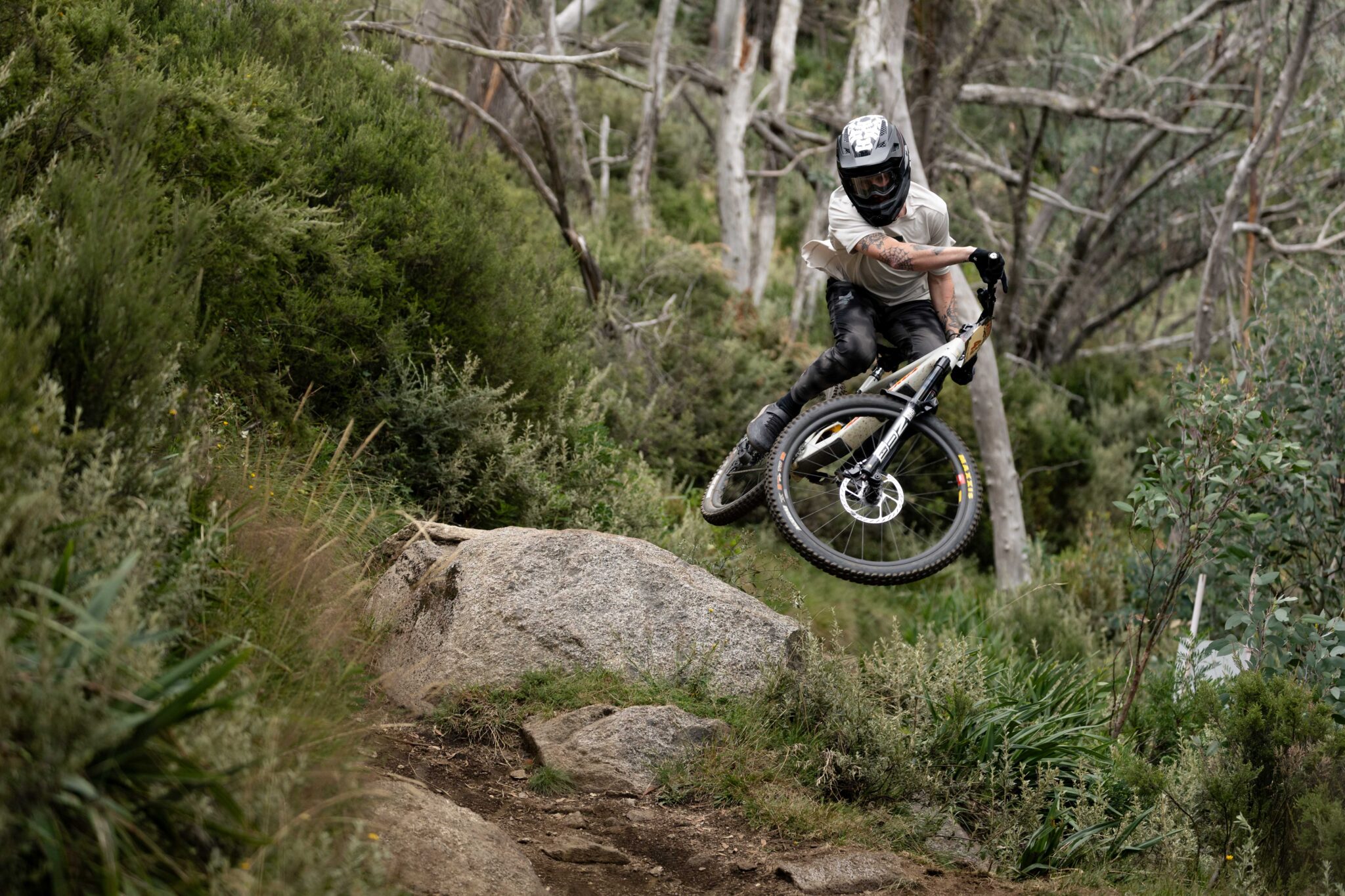Tested: Momsen Vipa ULTRA
A pure bred stage racing machine. We test the Momsen Vipa Ultra.
Words: Mike Blewitt Photos: Lachlan Ryan
Momsen Bikes come from across the Indian Ocean, straight out of South Africa. Anyone with a broad view of mountain biking will know that South Africa is the heartland for marathon and stage race mountain biking. The home of the Cape Epic has spawned enough stage races that some pro riders claim they can do a stage race each week or weekend throughout the year.
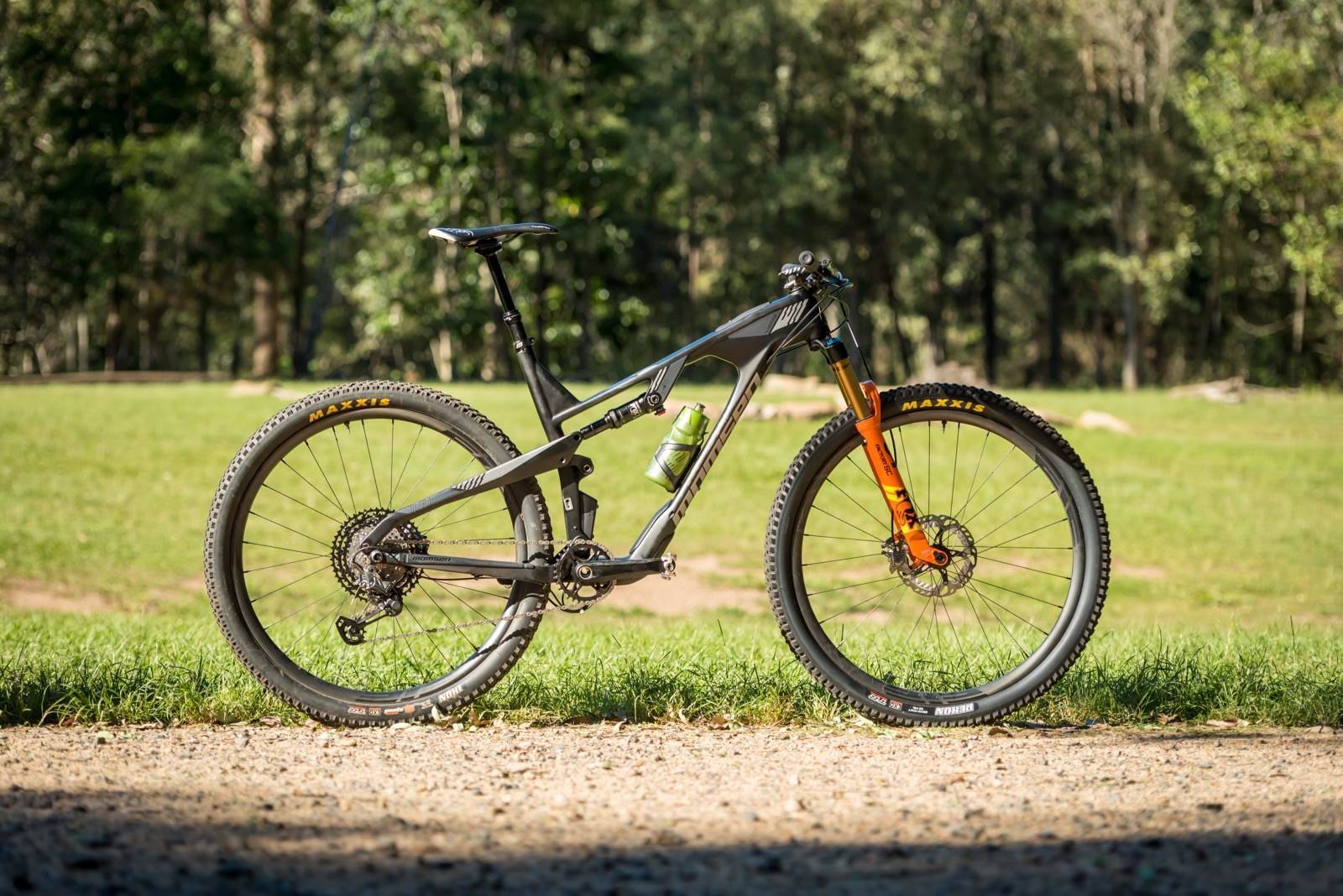
In 2018 we tested the Momsen Vipa Race Two, and the Momsen Vipa Trail. Both were 29” wheeled bikes, and the former was focused on racing while the latter would happily mix racing and trail riding, like many longer travel XC bikes that are now hitting shop floors and trails. Both bikes had a reliable, progressive suspension system that pedalled well without the need to reach for the lock out all the time, and a long reach that created a balanced ride.
Tester: Mike Blewitt
Riding Experience: Too much time faffing on bikes to develop employable skills doing anything else.
Generally Rides: Norco Revolver FS and HT
Height: 178cm
Weight: 72kg
Bike Test Track: Bayview Recreation Area, Gap Creek, Iron Bark, Bunya
At the Cape Epic in 2018, the Momsen Vipa Ultra appeared. With some visual cues from the Vipa Race, the Ultra looked like it had gained inspiration from a battleship. The frame sported large, angular carbon main tubes, with enough room to have two in-frame storage units. Only two sizes would be available, based on 100mm of rear travel, 100mm or 120mm forks and two geometry settings. The bike had a long reach, a slack head angle, and was designed around a 40mm stem. It was a huge departure from the majority of bikes seen at the Cape Epic, using modern geometry and aiming to push it to the limit.
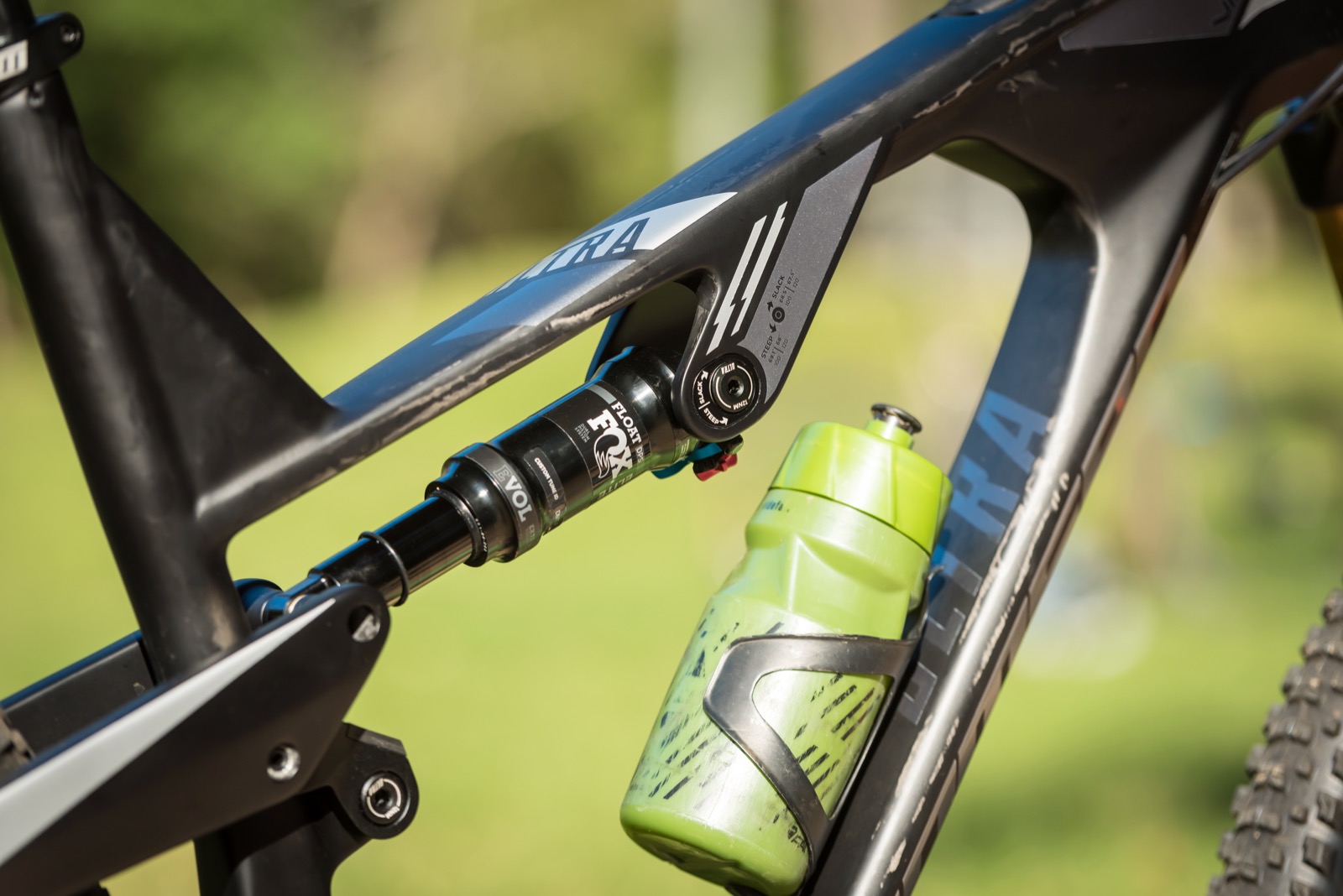
The Momsen Vipa Ultra is available as a frame kit, with free shipping to Australia. The kit includes the frame and rear shock, but also a 40mm and 50mm stem. It has all the hardware you need to build the bike for 1x or 2x, and with the parts for the in-frame storage. The frame comes in a compact box with the swing arms off. It sounds like a hassle but any new bike rides best if you take the time to prepare all the pivots properly – so that's a nod of approval from us.
Initial Impressions
Opening the box, the first impression is of the girth of the bike. The room behind the head tube is huge, and along with the area in front of the bottom bracket, this is where the storage areas fit. It is also where Momsen have used a higher modulus carbon fibre to keep the stiffness the greatest. These locations mean the bike is stiff under pedalling, and the steering stays direct.
Handling the frame, it's amazing to feel how broad the top tube is, the Momsen Vipa Ultra is clearly a bike that has been designed to be ridden hard. A closer look at the frame parts shows that the main frame has internal cable routing, and a removable hanger for a front derailleur with a SideSwing routing option. The rear brake hose and rear derailleur cable stay outside the swing arms, which is a lot easier for bearing services or maintenance whether at home or in a race camp.
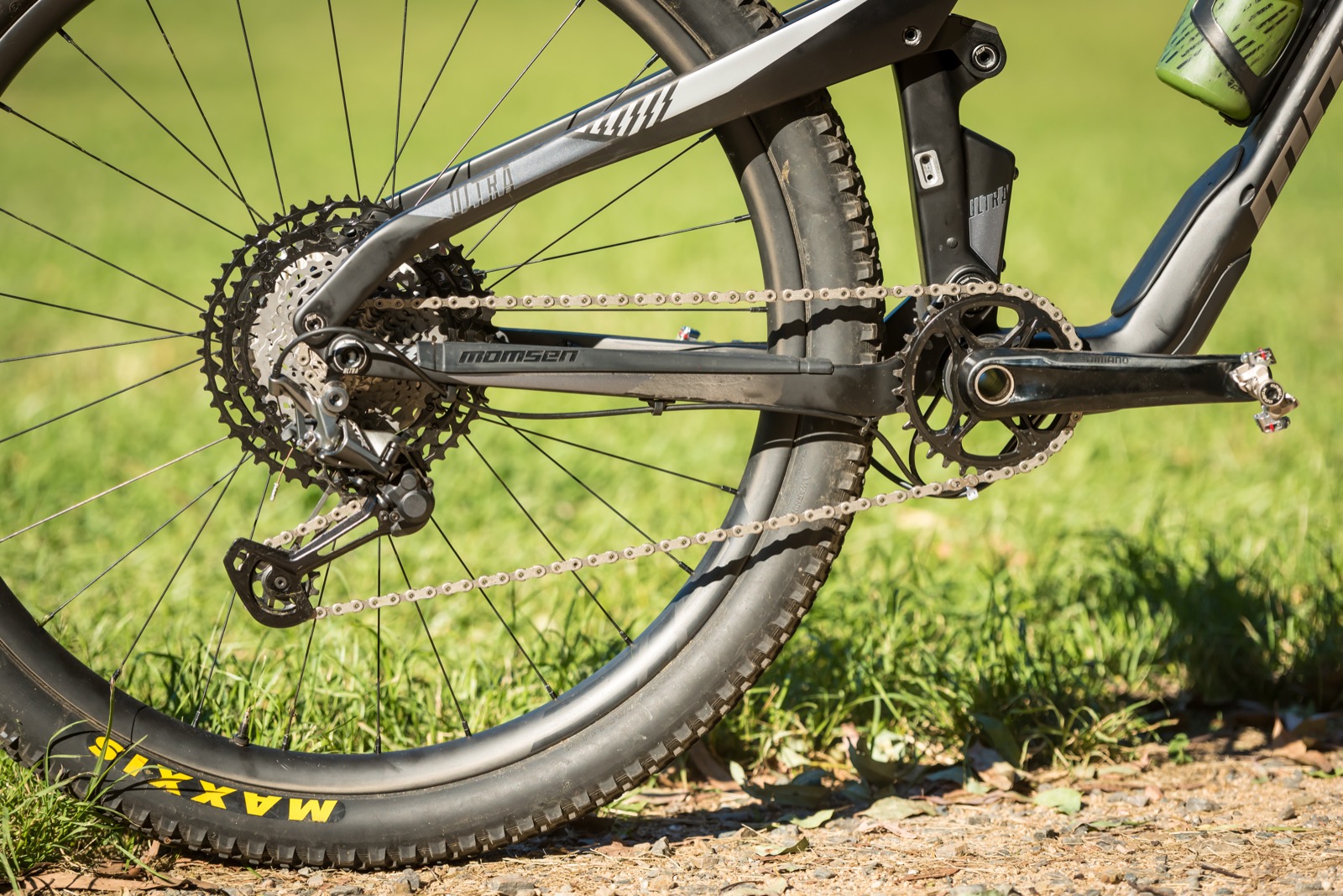
There are instructions with the parts, and while the frame goes together much better than flat pack furniture, if you aren't in the habit of stripping and building bike frames, this might be a job for your trusted local bike shop. Torque ratings are written on the bolt heads, so it's easy to set your torque wrench and adjust to spec as you go. What's neat is the flip chip at the front of the Trunnion shock mount. You can set the bike in a steep or slack setting, and the graphic shows how that will change your head angle depending on if you have a 100mm or 120mm fork. I opted for slack with a 120mm Fox 34 SC to start with.
Read about building up the Momsen Vipa ULTRA in more detail here
The frame isn't super light at 2.82kg confirmed on my scales for the size 2. If you consider that the new Pivot Mach 4 SL weighs under 2kg for a frame and shock, it's a different league. But that's ok, it's a different bike too. The rest of the build was a mix of my own parts like some carbon wheels and a KS Lev Integra dropper post, and a majority Shimano XTR M9100 12-speed group set, save for the hubs, cranks and rotors. The total weight was 11.75kg. And that's with 2.4”/2.35” tyres and a dropper.
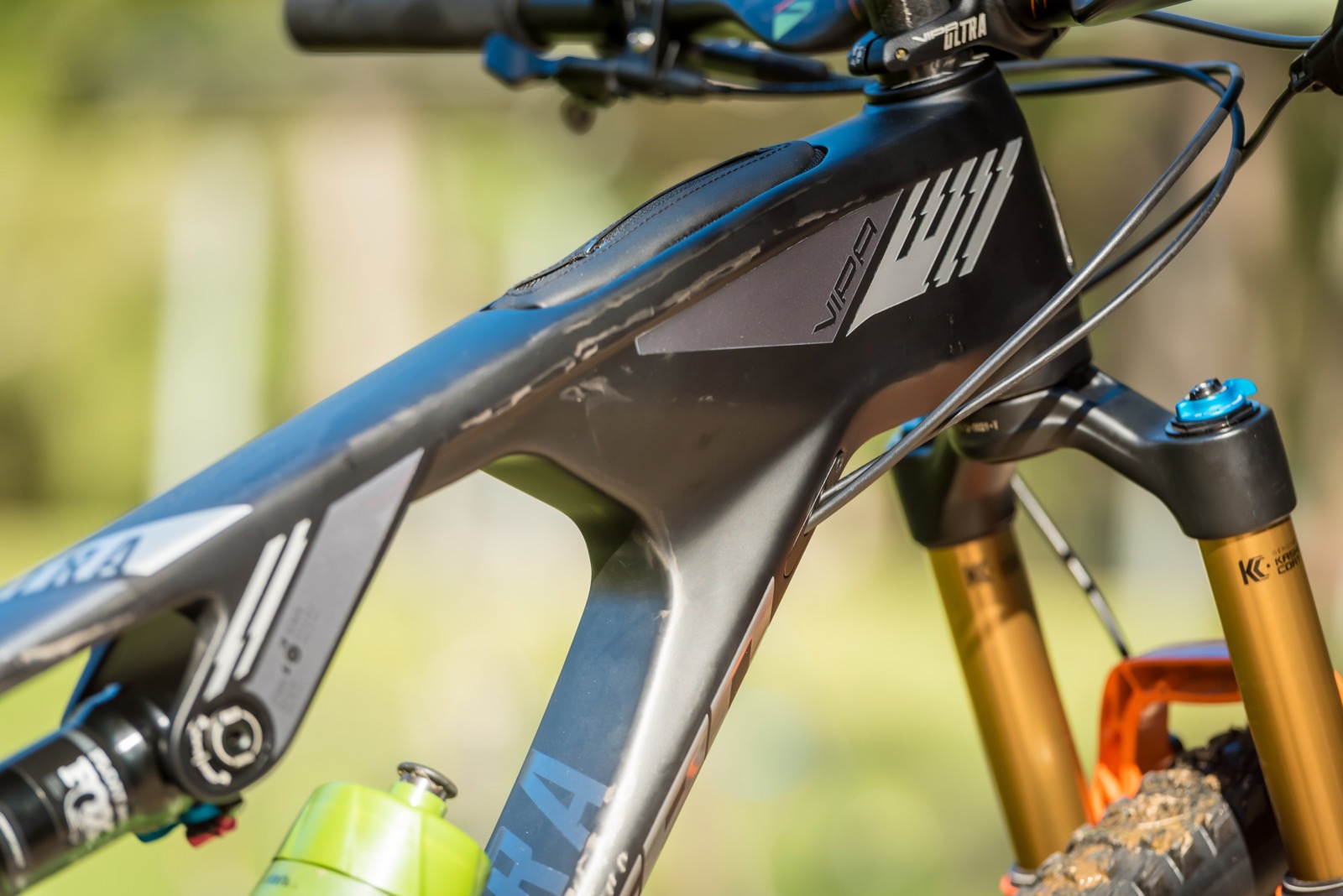
Built up the bike looks like it's ready for battle, with the huge angular lines in a stealth black and grey finish creating the look of a factory ride – especially with the bright orange Fox 34 SC up front. It looks long and slack and aggressive, and my only concern was whether the seat angle of 73.5 degrees when in the slack position with a 120mm fork would be a little too relaxed given the trends to move them to 75 degrees and beyond. Slacker works for sitting and pedalling, which is what you do a lot of in a stage race or marathon – so maybe it's just right? Of course, given the fork and flip chip options the frame can be run as steep as 74.6 degrees in the seat angle, with a 100mm fork and a capable 69.1 degree head angle.
The frame kit didn't come with a shock setting guide, but the shock length and suspension layout is a little bit reminiscent of low leverage designs like the new Canyon LUX. So I started at 110pso which didn't quite give me the sag I wanted, so I dropped a little from there and was set to hit the dirt. All I had to do was drop some Allen's Party Mix into the top tube container first!
On the Trail
On paper, the Vipa Ultra looked radically different to my normal bike that I’d ride for marathons and stage races. And standing there it really looked very long and slack. But throw a leg over and everything still falls to hand where you would expect. It is a long bike, and the front wheel is certainly further out in front than I was used to for a bike of this travel. But getting out of the seat to push it a bit was met with a very direct feel – no doubt helped by the high modulus carbon used around the bottom bracket and head tube junction. The bike feels really stiff and direct when it’s time to get up and go!
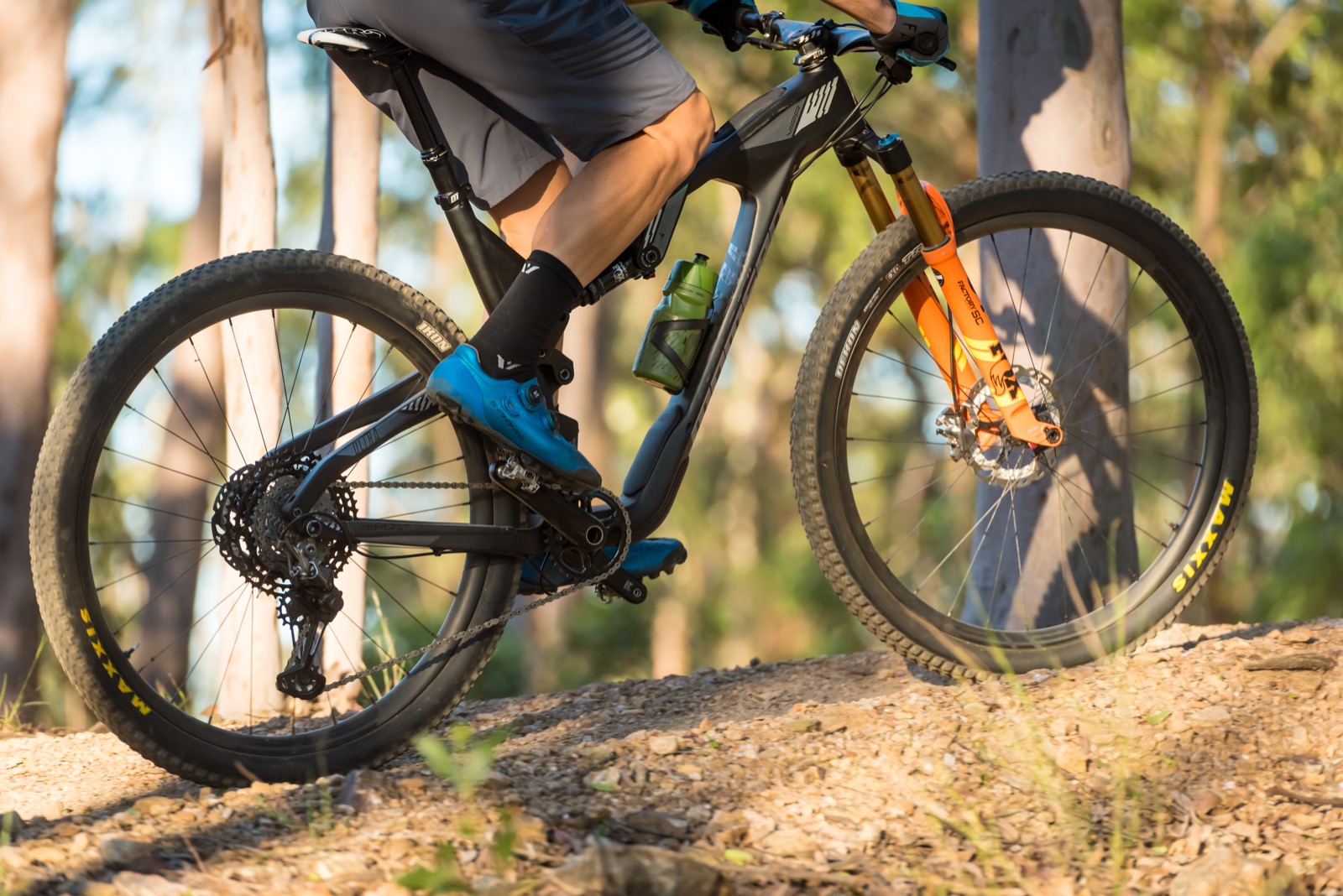
With both a 40mm and 50mm stem in the frame kit, I was glad I opted for the 40mm version. The reach is long and low, and the 40mm suited my preference for reach. I tend to run a little longer than some for my height, and the two frame size system is an interesting take on sizing. While it should suit the majority, tiny riders and those well above 2m might need to look elsewhere.
Climbing up some singletrack to start a longer descent, two things really stood out. Firstly, the suspension system is very stable when pedalling. I opted to keep it open, although putting it in the trail position did stop sinking into the travel when coming off rises on the climb. I do think this bike would suit a dual-remote lock out – but at the same time I don’t run one myself as I like less clutter and more simplicity. The other thing I noticed was how well the bike responded to weight shifts forwards and backwards when moving up and over small trail features. The general stance of the bike had made me think it might just be designed to pedal and plough through – but thanks to a short enough back end of 440mm and the lower position keeping weight on the front when needed, the bike was more agile than expected, and in a good way.
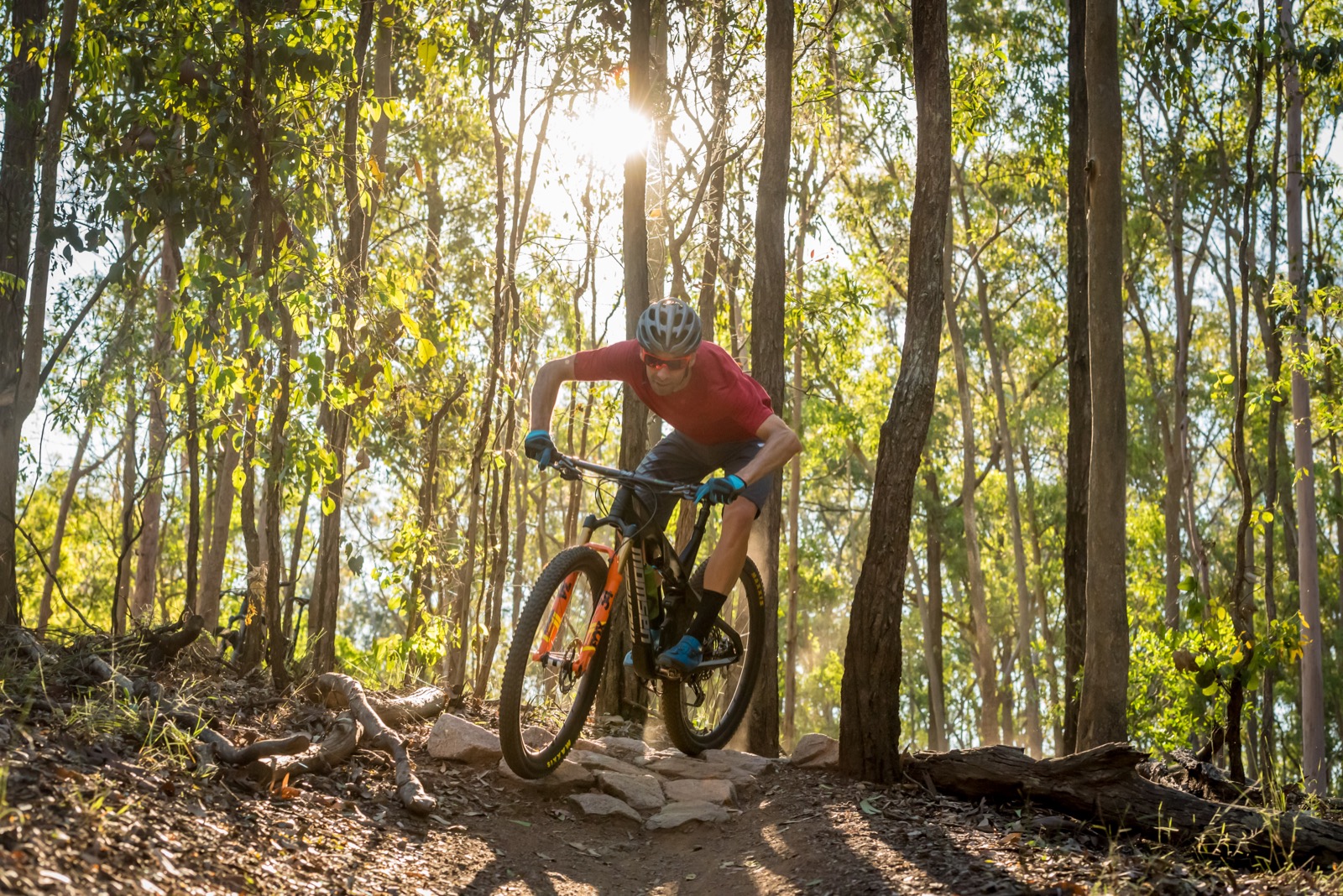
All of these attributes transferred to descents as well. From pumping trail features on flatter sections through to the stiffness when pushing into corners and going over roll overs or off small drops – the Momsen Vipa Ultra has impressive trail manners for a dedicated marathon and stage race bike.
One thing I did notice was a bit of noise from the internal routing. The port covers are metal which will last for ages, but unlike some rubber stoppers others use, there is no way to lock them into place. Funnily enough the lower storage area on the frame actually keeps the brake hose and cable outer very still – so there was less rattle than some bikes. But this is a premium frame and I think there shouldn’t be any rattle at all.
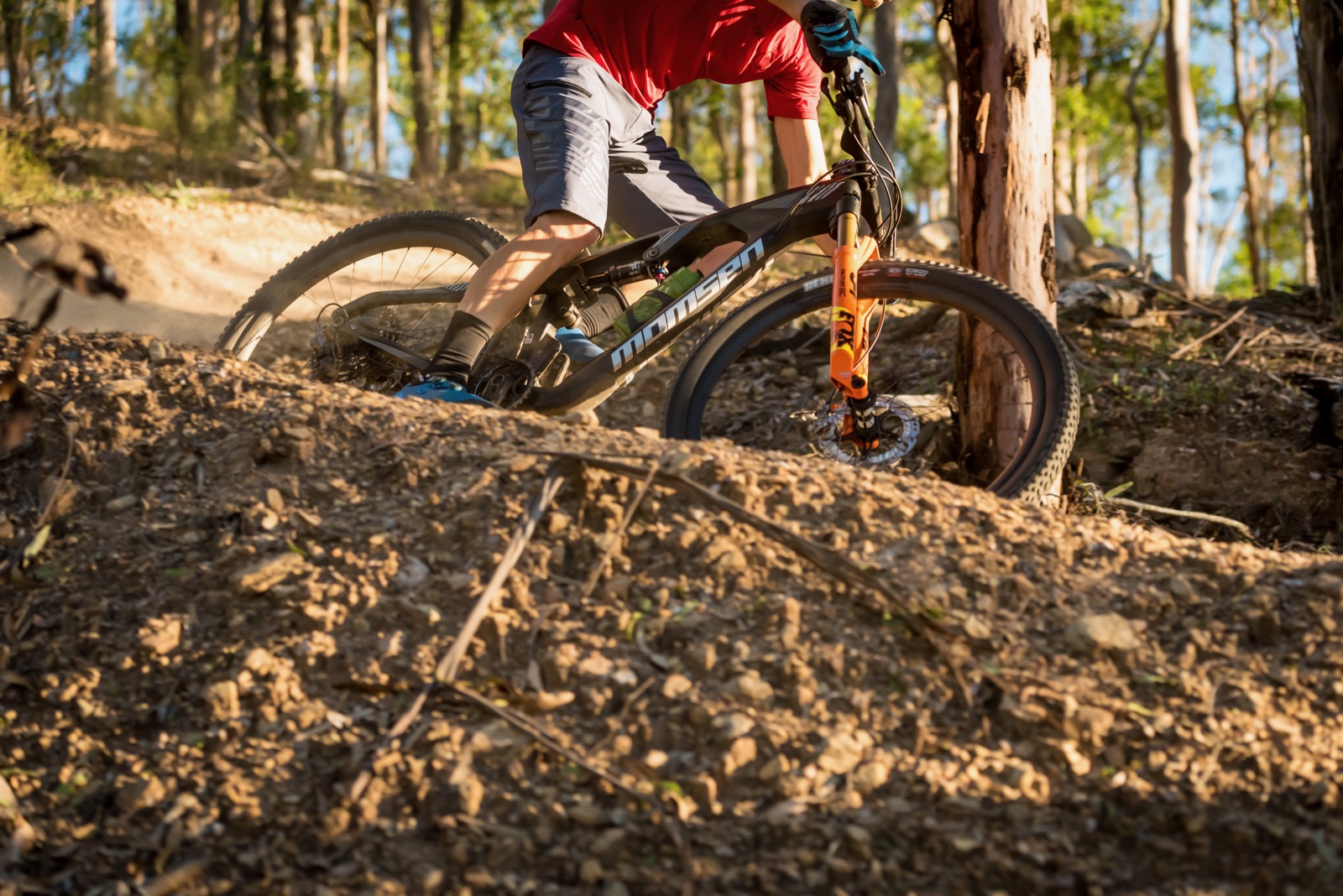
With the bike initially setup in the slack position with a 120mm fork, it was descending nothing like my own 100mm XC frame when it was run with essentially the same build kit. The overbuilt look of the Vipa Ultra frame has created a very solid platform, and while the frame isn’t whisper-light the upshot of that is a bike that tracks really well and doesn’t feel out of its depth on more technical trails – within the realms of what you’d tackle on a 120/100mm bike. And that means a lot when you look at how some marathon and stage races are going. An event like Port to Port is singletrack heavy, and while it’s not crazy technical there’s a big advantage to being able to ride the singletrack fast and less on edge. Take a look across the ditch to The Pioneer and you see some pretty epic trail rides being built into the stages. You’re tired, you’re cross-eyed from racing and you have to descend down a trail like Rude Rock. A bike that doesn’t flex under hard cornering, and has a long front reach making it near impossible to go over the bars all of a sudden just makes sense, especially when it’s a competitive weight and has so many features that work for a stage race.
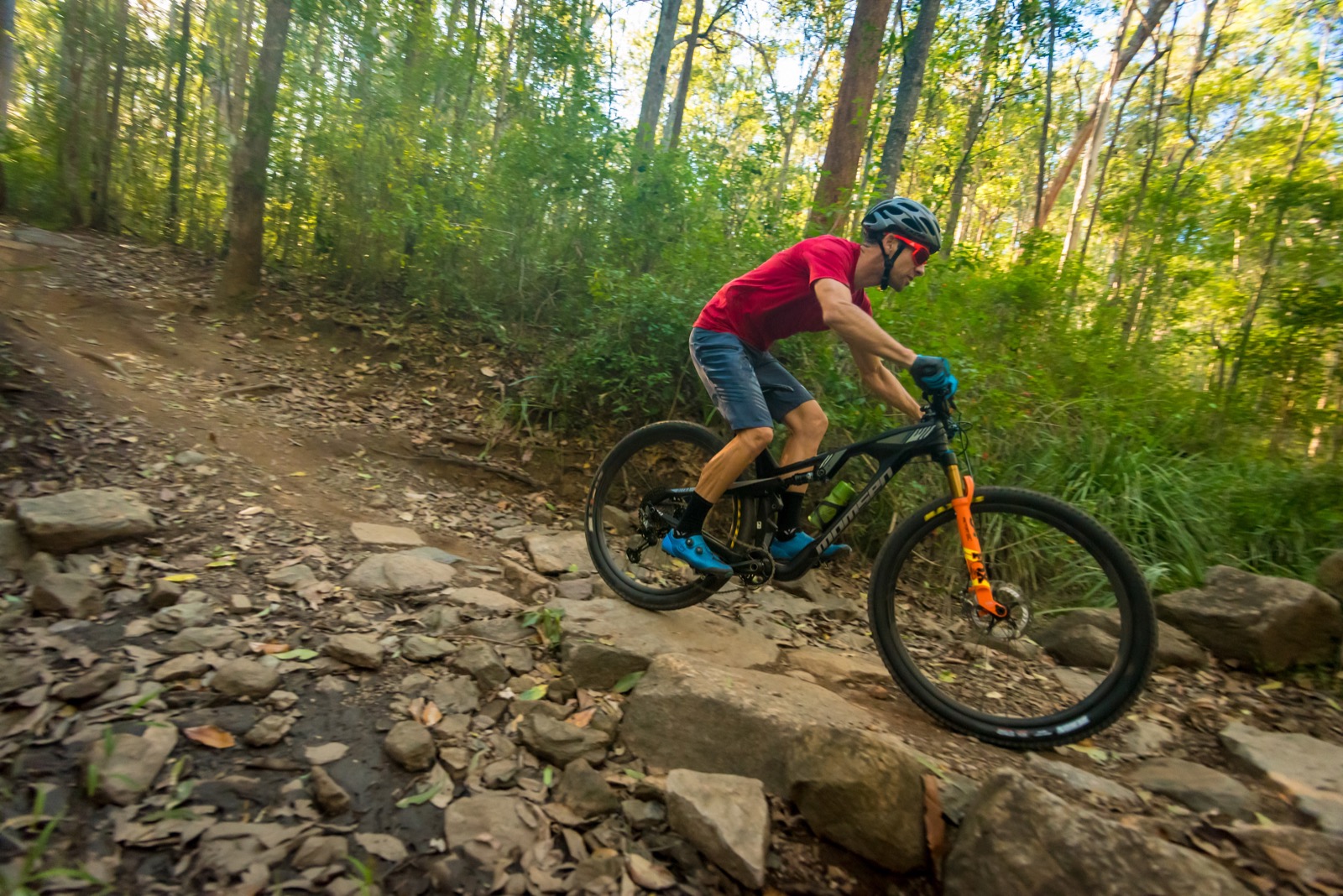
On that, about the storage options. The front pocket was the first thing I joked about on the bike and the first thing I really appreciated too. I quite literally did have it full of jelly snakes on my first long ride on the bike and it was great. They’re not recommended nutritoin but it was easier to access than a jersey pocket or Camelbak pocket – even on a vest-style backpack. The bag is built in and removable for washing. It’s a good spot for food, or anything you need to get to quickly like tyre plugs, CO2 and a multitool. It’s also a good option for a light battery if yours fits and you do some night riding or 24 hour racing. Bear in mind that if anything is loose, it might rattle in there. So a multitool and tyre lever aren’t a good combination, you want to make sure the things that go in are a snug fit. The lower storage option I used less. The cover is secure but it needs to be full. I had a multitool in there but it popped out on my first bunny hop as the tool flew against the cover and opened it. A packed tube will fit – just. I actually think it suits a tube, with another tube on top with a strap. Both tubes are down low and for any serious stage race you may well end up carrying two tubes anyway.
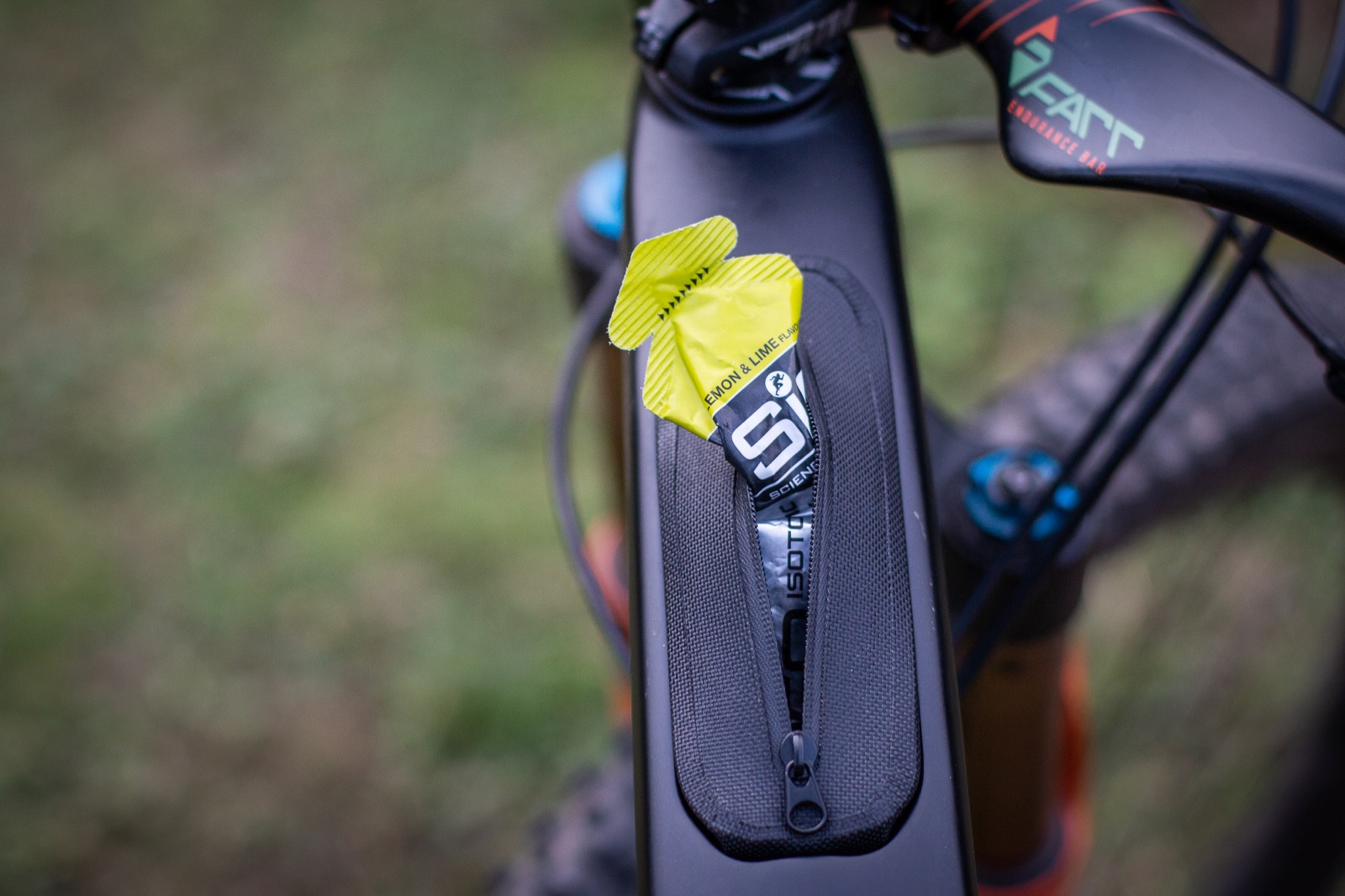
Where I did struggle with the Momsen Vipa Ultra at first was on some faster rides when things were a little wet, with the front wheel slipping off wet roots and logs. It just took a slight adjustment of riding position, as I was still used to getting back. But getting forward to attack is the best way to get the most out of race-ready bikes. Suspension and tyres just can’t do their job without weight on them. Regardless, it meant it was a good time to test the steeper position.
With the guide printed right on the frame, changing the shock position and geometry is really simple. Now, the head angle was 68 degrees, a little steeper than the 67.5 degrees previously. The seat angle was also a little steeper. My first ride out of the driveway presented a bike that felt far more racey, and by the time I was on the trails the bike reacted more like what I would look for, with rapid changes of direction while still keeping the stability that was so useful. As the geometry naturally had me a tiny bit further forward, the front end was loaded into corners and there wasn’t a sense of the front wheel being too far in front. I did all this with the 40mm stem still fitted, but it did reduce the reach a little and I could have moved to the 50mm stem. But I was enjoying the bike a whole lot and didn’t feel the need to change.
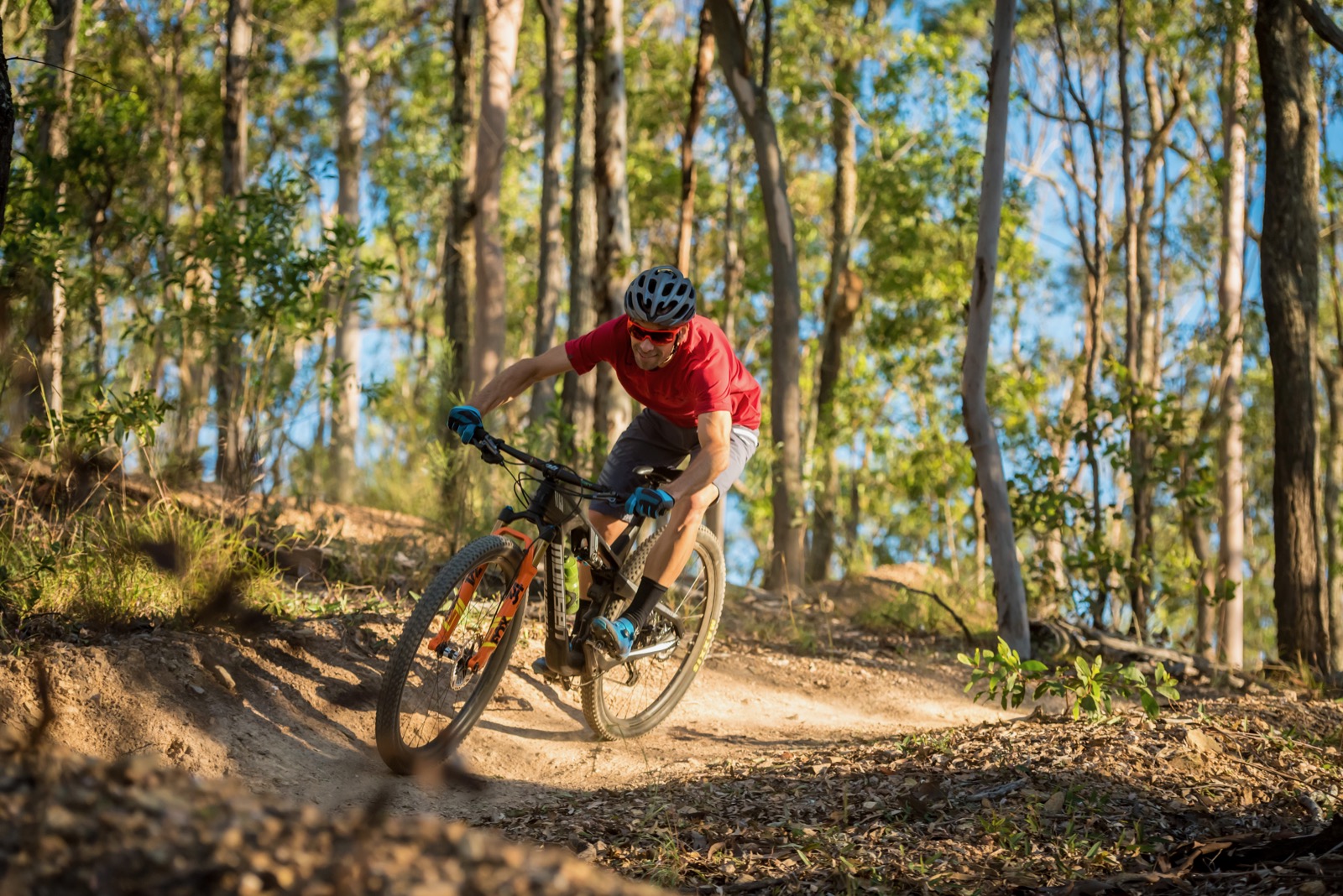
For me, this was the ideal setup. I liked having the stiffness of a Fox 34 SC with 120mm of travel up front, but the slackest position didn’t suit my local trails and riding. I didn’t have a 100mm boost spaced suspension fork to fit, and if I did I suspect that it would suit the slack position for the same ride feel. But given the adaptability of the frame, I think this is something any owner will fine tune themselves.
Our Take
At first glance, I thought the Momsen Vipa Ultra might have a bit too much going on. But as I built it up and started riding the bike I realised that the thought that went into this bike came from many years of direct market research and feedback. It is easy to see how this bike has developed from the Momsen Vipa Race that I test rode in early 2018. It’s a race specific bike with manners that suit marathon and stage racing.
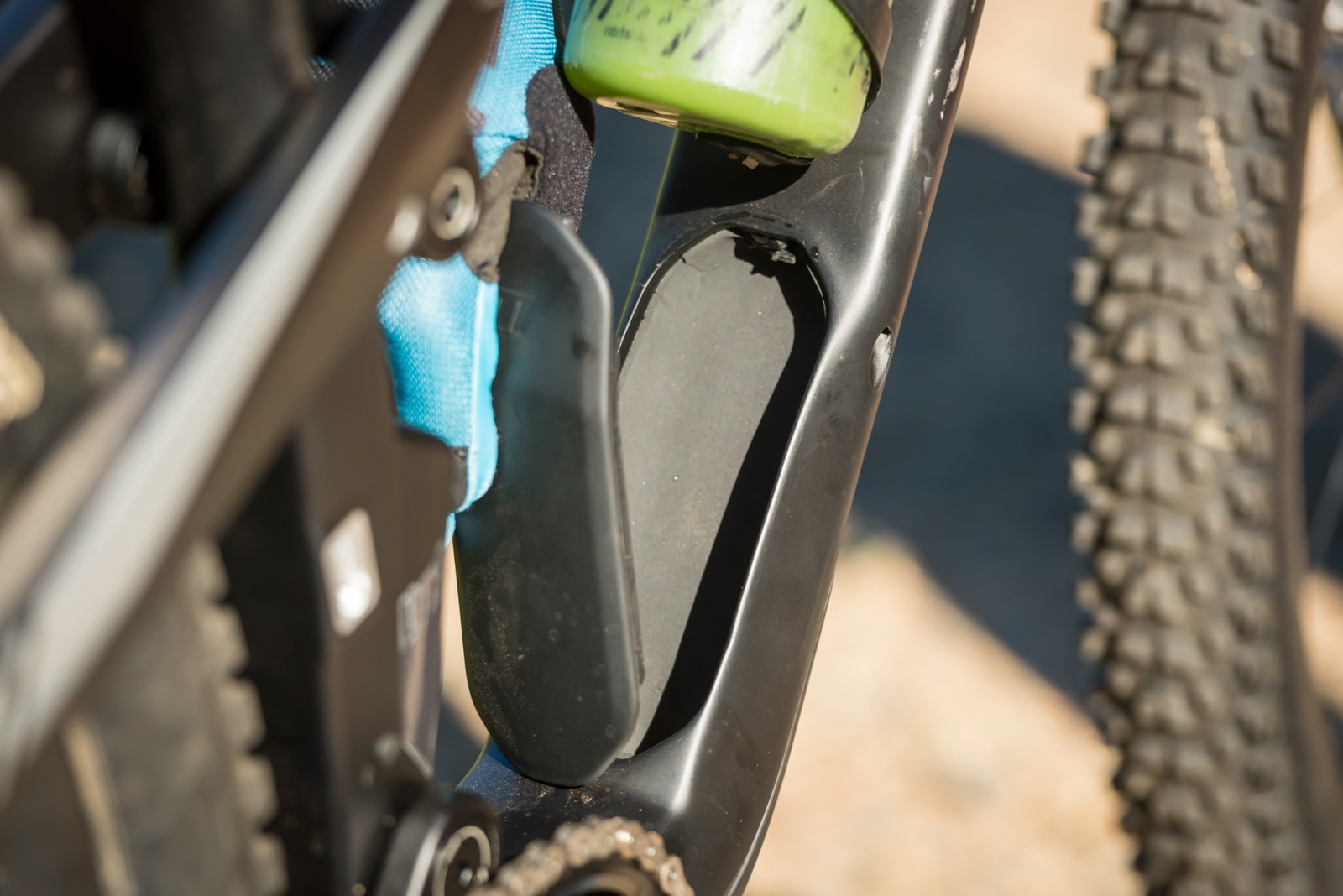
At $4189 for a frame and shock (ok, and two stems) it is a premium option. However this is less than something like a Santa Cruz Blur CC frame, or a Yeti SB100 frame, or a Specialized S-Works Epic frame set. And it’s possible that it is more suited to hard stage races and marathons than those three, thanks to the adjustable geometry, options to fit upto 3 water bottles, and the in-built storage solutions.
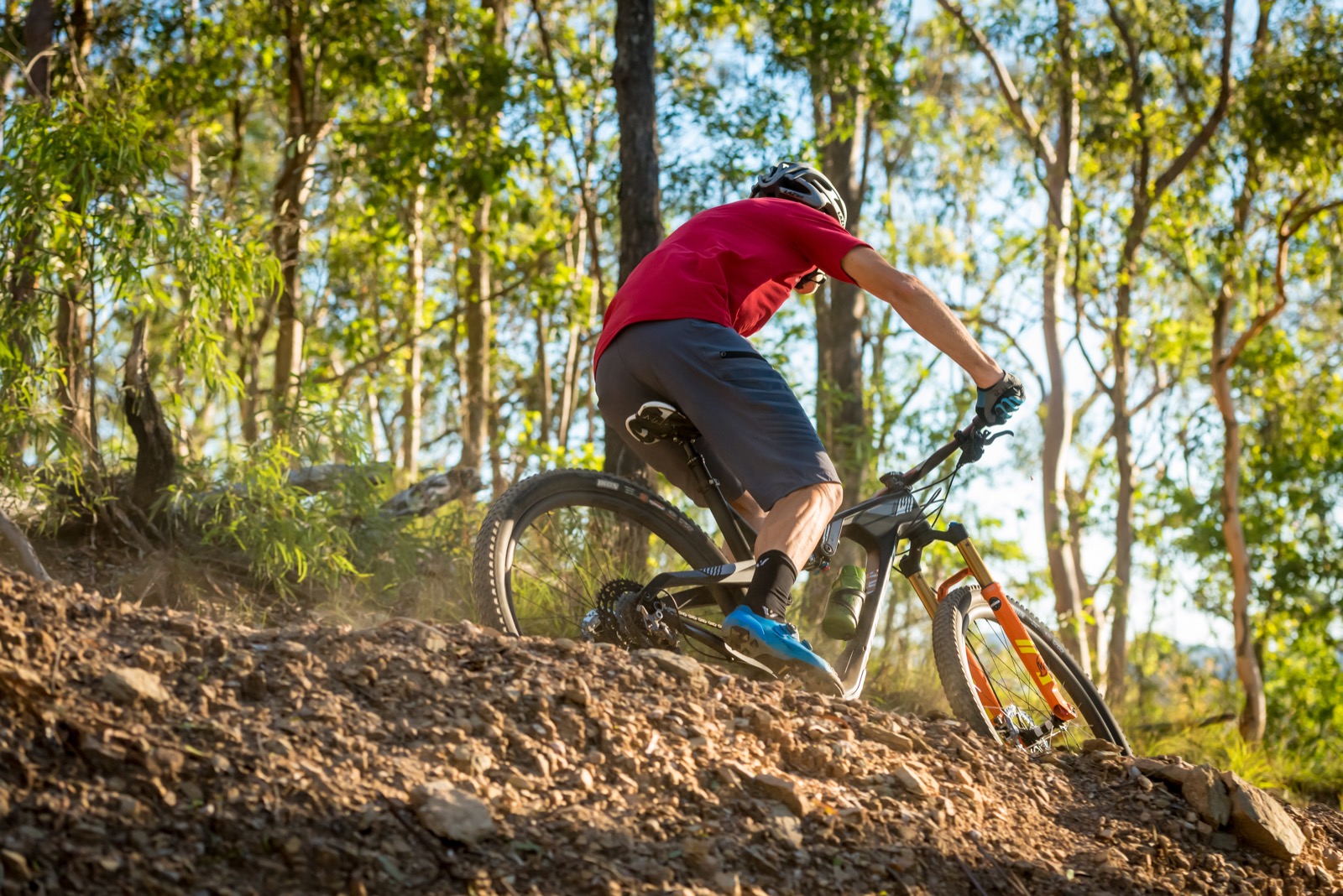
I was thoroughly impressed by the Momsen Vipa Ultra. I built it up to really push the bike towards an aggressive handling bike, with a Fox 34, long dropper post and wide tyres. The bike still felt agile, never felt nervous and didn’t throw up any suprises. The Vipa Ultra has been developed in an area that has made mountain bike marathons and stage races their bread and butter, and with the trails in bucket list mountain bike events like The Pioneer, Cape Epic, Swiss Epic, BC Bike Race, Breck Epic and more getting more technical and more demanding, a bike like the Momsen Vipa Ultra just might be exactly what you need.
Brand: Momsen
Model: Vipa Ultra
RRP: $4189 (frame kit)
Weight: 11.75kg (with pedals, as tested)
From: momsenbikes.com
Available Sizes: 1, 2 (tested)
Frame Material: Carbon fibre
Fork: Fox 34 SC, 120mm
Shock: Fox Float DPS Performance Elite, 100mm
Shifters: Shimano XTR M9100 12sp
Derailleur: Shimano XTR M9100 SGS 12sp
Crank: Shimano MT900, 175mm
Bottom bracket: Shimano XTR, BSA
Chain: Shimano M9100
Cassette: Shimano XTR M9100 10-51
Hubs: DT Swiss 350, Boost, C/lock 28H
Spokes: DT Revolution 2/1.8/2
Rims: EIE Carbon A29C29D25S
Tyres: Maxxis Rekon 2.4”/Ikon 2.35”
Brakes: Shimano XTR M9100, 180/160mm
Stem: RideFarr 40mm
Handlebars: RideFarr Farr Barr, 720mm
Seatpost: KS Lev Integra, 125mm drop
Saddle: PRO Carbon

